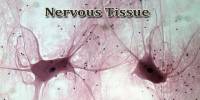Researchers discovered that a gene associated with touch may also function as an olfactory gene. This is the conclusion reached after researching a tiny, translucent worm with numerous parallels to the human nervous system. Are you able to smell the roses? There’s a chance that the gene that allows you to smell their wonderful fragrance will also allow you to feel the prick of their thorns.
SMU (Southern Methodist University) researchers discovered that a gene associated with touch may also function as an olfactory gene. This is the conclusion reached after researching a tiny, translucent worm with numerous parallels to the human nervous system.
“This gene has previously been identified as a potential treatment target for chronic pain. Now that we know the gene is also involved in olfaction, it may present an opportunity for treating or understanding olfactory defects, such as the mysterious loss of smell that many COVID-19 patients have reported” SMU’s Adam D. Norris is a co-author of a study published in the journal Nucleic Acids Research.
Norris is the Floyd B. James Assistant Professor in the Department of Biological Sciences at SMU. He collaborated with SMU graduate students Xiaoyu Liang and Canyon Calovich-Benne, who are the study’s lead authors. They are both pursuing a Ph.D. in Biological Sciences. Touch is one of the human body’s most important senses, yet there is a lot we still don’t understand, Norris says.
Single cell sequencing enables researchers to examine all of the genes that are turned on in a single cell. Deep single cell sequencing allows them to see the full gene, rather than just a little portion from the end of the gene. Our use of this technology enabled us to determine isoforms in single sensory neurons with extraordinary sensitivity, leading directly to these results.
Dr. Norris
When we touch anything, our nervous system turns the mechanical input from touch receptors in our skin into electrical signals to the brain, according to scientists. This is known as mechanosensation, and it allows the brain to tell us a range of information about the object we touched, such as whether it was hot or cold, or sharp, as in the case of a rose’s thorns.
Because the human nervous system is so complicated, the specific mechanics of “what’s going on beneath the hood” during this electrical response to touch are unknown. What can worms teach us about human perception?
Because it is a much simpler species, scientists routinely study the neurological system of the worm Caenorhabditis elegans. Despite the fact that this worm’s nervous system only has 302 nerve cells compared to the billions of nerve cells found in the human brain, many of the genes that make these neurons in C. elegans have functional counterparts in humans.
The SMU team began with well-established knowledge: that a gene called mec-2 was essential for activating touch neurons in C. elegans. The SMU study team discovered, however, that activating touch isn’t its primary function.
“Aside from turning genes on and off, another technique to influence neuron activity is to create various (but functionally comparable) copies of a single gene known as isoforms. We sought for various neurons that contained different isoforms of essential genes “explained Norris. “This led us to the basic discovery reported in this research, which is that multiple isoforms of a single gene (mec-2) interact together to permit both mechanosensation and olfaction.”
They discovered that the mec-2 isoform, which is responsible for mechanosensation, requires the activation of a gene called mec-8. Neurons have the ability to express many genes within them. Those that express the mec-8 gene produce the olfactory isoform of mec-2 instead.
“Mec-8 makes sure that mec-2 is made in the mechanosensory isoform,” he said.

Without it, mec-2 genes instead create isoforms required for smell in C. elegans, according to SMU researchers who used cutting-edge techniques termed “deep single-cell sequencing.”
“Single cell sequencing enables researchers to examine all of the genes that are turned on in a single cell. Deep single cell sequencing allows them to see the full gene, rather than just a little portion from the end of the gene,” Norris added. “Deep single cell sequencing identifies all of the genes and isoforms of those genes expressed in a single cell.”
“Our use of this technology enabled us to determine isoforms in single sensory neurons with extraordinary sensitivity, leading directly to these results,” he stated. Could this lead to the development of a therapeutic medication to address odor loss?
Norris Lab’s next step is to study whether a human gene named stomatin can perform the same function as mec-2 in the sense of smell. Worms, not humans, have the mec-2 gene. However, stomatin is a human-produced gene that has been shown to be substantially comparable to mec-2 in terms of touch sensitivity in humans.
If it is shown to be true for smell, Norris believes that similar treatments being researched to treat chronic pain might be used to address loss of smell in those who have had COVID-19.
Therapeutic medications function by identifying a molecular target that is involved in a negative biological consequence. Once that target has been discovered, the next step is to locate a chemical key that can bind to the target and change its behavior such that it does not have the usual negative effect. Using this chemical key, a medicinal medication can then be developed. In the instance of the Norris team’s research, scientists want to determine if they may potentially tweak mec-2 in worms – and potentially stomatin in people – to switch specific senses on or off.
“The objective in preclinical trials is to reduce the sensitivity of mechanosensory neurons without clogging the sensory channels themselves by altering the activity of mec-2 to treat chronic pain,” Norris explained. “Perhaps by doing so, mec-2 can be employed as a “sensory thermostat” to increase or decrease sensory activity.”
Norris, on the other hand, underlined the importance of more research into this notion. “So far, research in C. elegans and mice have shown results that are consistent. It is natural to assume that similar results will be obtained in humans “He stated. “However, that must be demonstrated.”
















